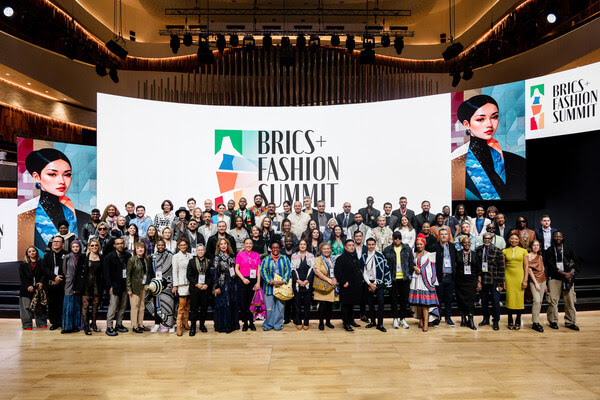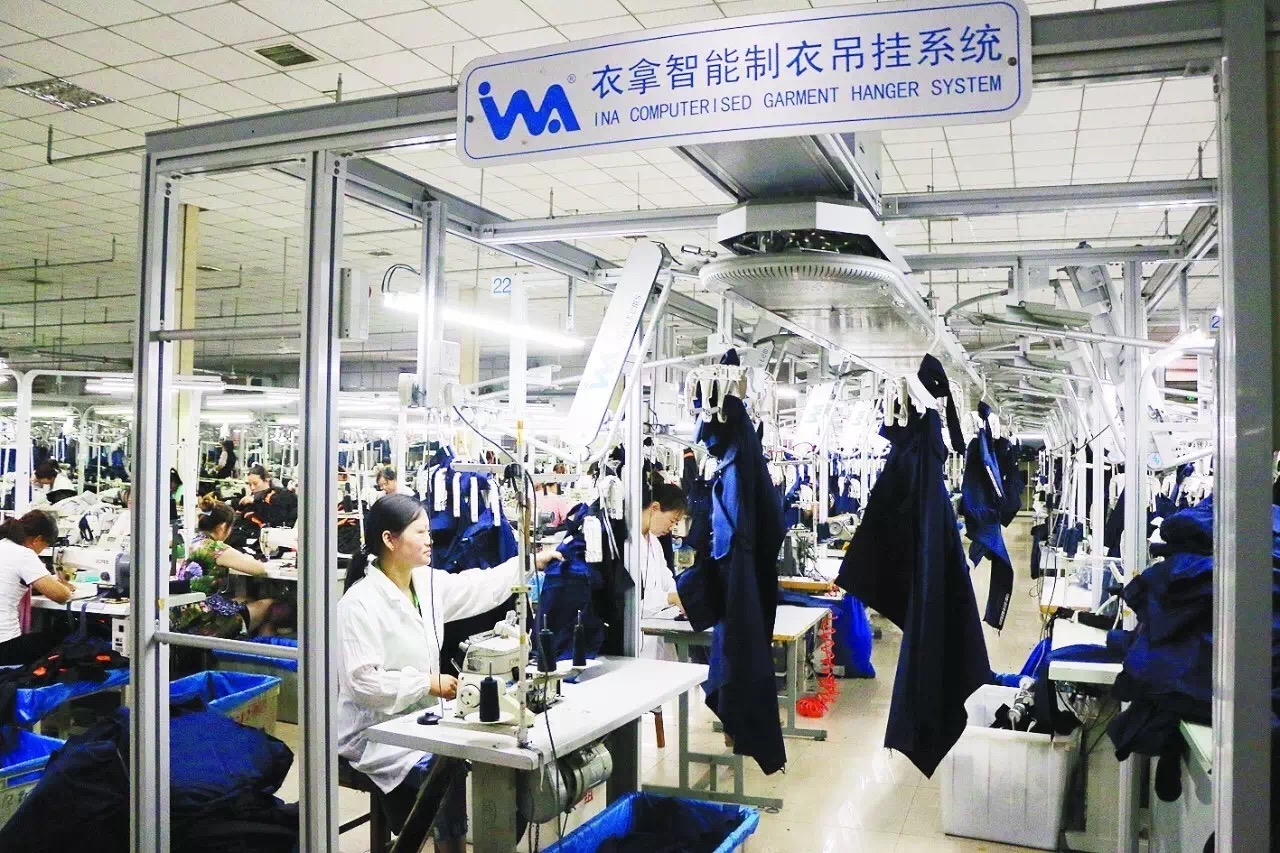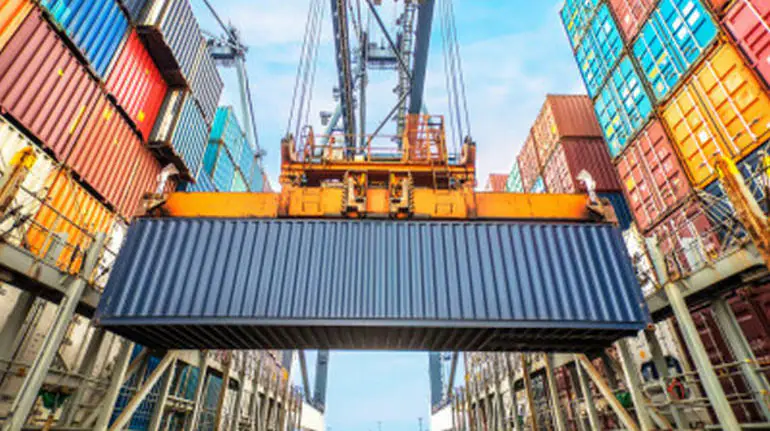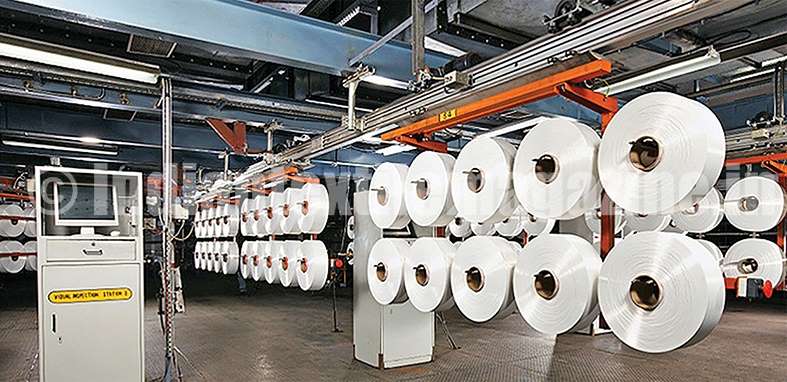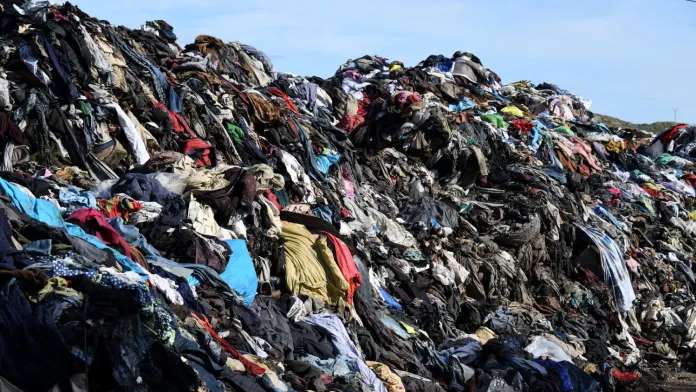FW
In 2014-15 Welspun India recorded its highest annual sales and profitability in its history. It also maintained its position as the number one home textile supplier to the US for the third consecutive year. During the year, Welspun completed a major part of its vertical integration project for increasing its spinning and weaving capacity. The spinning unit at Anjar, Gujarat, is expected to take the total spinning capacity of the company to over three lakh spindles, fulfilling nearly 70 per cent of its internal yarn requirements. It will further improve the company’s supply chain with less dependence on external sourcing.
A global leader in home textiles, the company supplies to 14 of the top 30 global retailers. It offers a wide range of home textile products in bath, bedding and flooring solutions. Welspun has a strong presence in the US, Canada, the UK and Europe. Almost 95 per cent of its production is exported. The company owns brands such as Christy, Spaces and Welhome, which constitute around 11 per cent of its sales.
The company has developed innovative technologies. Some of these include Hygro Cotton (ultrasoft, ultra absorbent, quick drying, etc.) and Flexifit sheets (fits a range of mattress sizes). Apart from product innovations, the company continuously works on process innovations and innovations in the supply chain.
www.welspunindia.com/
The depreciation of the rupee is expected to have a mixed impact on India’s textile exports as competition will increase from China following the devaluation of its currency. But the rupee depreciation will improve competitiveness of India’s cotton exports. India is the world’s second largest cotton exporter after the US.
The Indian currency has depreciated by about seven per cent since April. In apparels, export competitiveness depends on the relative currency movement of major exporters such as China, Bangladesh and Vietnam. As yuan has depreciated more than the rupee, and given that China enjoys a dominant position in international export markets, India will see increased pricing competition which will affect the profitability of Indian exporters.
However, given that the rupee has depreciated more than that of other competing countries, and India’s share in overall trade is relatively small, export volumes may not benefit a lot. Besides, in view of the fragmented nature of India’s fabric industry, exporters will have to pass on the benefits of the depreciated rupee.
Export competitiveness of Indian cotton yarn depends on the relative currency movement of the rupee with Pakistan’s currency since Pakistan is the major competitor in export of cotton yarn to China. As Pakistan’s currency has remained relatively stable, the depreciation of the rupee improves the competitiveness of Indian cotton yarn as well.
Spinning units in India want the duty on synthetic fibers which is presently at 12.36 per cent to be brought down on par with that of cotton. Right now synthetic yarn spinning units face an inconsistent supply of synthetic fibers from domestic manufacturers. And those mills which import the fiber are forced to pay 23 per cent duty, making the yarn less competitive in the domestic market.
Exporters say they are positioned well to manufacture and supply yarn and fabrics but that face inadequate export incentives. They want an export incentive of seven per cent to encourage consistent and substantial export volumes. For long the spinning industry has been wanting a reduction of the hank yarn obligation from 40 per cent to 10 per cent and that the Cotton Corporation of India should function as a bridge between the cotton farmer and the mill sector and not as a trading body.
Especially in Tamil Nadu the industry wants VAT reduction on cotton, cotton yarn and synthetic yarn from five per cent to two per cent, the end of the one per cent cess on sale of cotton and cotton waste, and establishment of processing centers in coastal areas for cost effective processing of yarn, fabrics and finished goods.
Indo Count, one of the three leading Indian suppliers of bed linen and the fourth largest bed sheet supplier to the US recorded 46 per cent higher turnover in Q1 of the current financial year compared to the same period last fiscal. Profit rose 122 per cent over that reported in the first quarter of 2014-15 and a 97 per cent growth over the profit in the immediately preceding quarter.
Indo Count is a global bed linen company. The integrated company manufactures yarn at one end to finished made-ups at the other. The company has one of the highest margins within the country’s integrated textile sector and one of the highest asset-turnover ratios. It makes bed sheets, flat sheets, fitted sheets and pillow cases, fashion bedding, comforters, quilts and coverlets, decorative pillows etc.
Within the home textiles segment, the company is focusing on niche bed linen. To strengthen its competitiveness in home textiles, the company expanded its capacity to 68 million meters per annum last year. This helped widen the presence of value-added products in its portfolio.
The company markets its products in 49 countries. Nearly 65 per cent of revenues are derived from the US, the company’s largest market. Other markets are the UK, Canada, Europe and Australia.
www.indocount.com/
India will not test textiles and textile articles originating from specific countries for the presence of azo dyes, says DGFT. The relevant countries are: Serbia, Poland, Denmark and China. These countries have banned the use of azo dyes in textiles and textile articles. India bans the import of textile and textile articles which contain specified hazardous dyes. Import consignments should be accompanied by a pre-shipment certificate from a textile testing laboratory accredited to the National Accreditation Agency of the country of origin.
In cases where such certificates are not available, the consignment will be cleared after getting a sample of the imported consignment tested and certified from an agency like the Textiles Committee of Ministry of Textiles or the Central Silk Technological Research Institute or the Central Silk Board. Azo dyes are a class of synthetic dyes used for coloring a variety of consumer goods such as foods, cosmetics, carpets, clothes, leather and textiles.
When certain azo dyes have prolonged contact with skin they can break down to form aromatic amines, some of which are known carcinogens. A carcinogen is a substance capable of causing cancer. Although banned in Europe, and restricted in the US, azo dyes are allowed in Australia.
Textile units operating out of Perundurai SIPCOT Industrial Growth Centre, Tamil Nadu, are losing out on competitiveness in pricing of goods because of huge expenditure involved in complying with the norms. Meanwhile, the state is espousing the cause of implementation of Zero Liquid Discharge (ZLD) system for industrial units generating harmful effluents.
About 15 industries closed operations over the last four years after incurring losses. This is out of almost 50 textile processing units in the SIPCOT complex. S Selvaraj, Joint Secretary, Perundurai SIPCOT Textiles Processors Association (PSTPA), points out that retaining customer base in export market is difficult due to disadvantageous pricing. Thus, an equal number among the existing units are in a similar predicament, he added.
The height of solar evaporators from the ground level is being raised by a few feet by industrial units in SIPCOT. To rule out mixing of hazardous waste in the form of the end-salt with soil, the Tamil Nadu Pollution Control Board has directed the units to do so. The PSTPA has urged the State government to enforce uniform compliance by all dyeing and bleaching industries.
The Rs 700 crores project would be implemented by the Tamil Nadu Water Investment Corporation for CETPs. They too have consented to visit SIPCOT soon to study the scope to invest in a common facility for Reject Management benefitting the existing 35 textile units.
The Global Investment Meet (GIM) may turn into a bonanza for one of Tamil Nadu’s most prominent and labour intensive sectors, in terms of new projects in all the right places. The textiles and apparel sector of the state is likely to get a cumulative investment of Rs 4,500 crores and these investments would primarily be higher up the value chain. The investments, it is believed would give a significant boost in terms of employment generation and stimulus to ancillary industries. Tamil Nadu has long been a textile hub, however, its strength has laid in the extensive spinning industry, which comprises of almost 40 per cent of India’s spinning capacity.
As Manickam Ramaswami of Loyal Textiles, one of the largest textile companies in India says that the bulk of this investment is likely to come in the garment and the apparels sector because that is where the opportunity is. He added that they themselves were signing MoUs for investment worth Rs 150-220 crores at the GIM.
Industry experts state that if this is the case with investment, it would greatly benefit Tamil Nadu and the state’s workers. New projects higher up the value chain would also strengthen the sector, which already has elements of the whole textile value chain from cotton to garment making. These new projects could also help soak up the slack in demand for yarn due to China’s burning out.
India's top industrialists have sought protection for the textiles and steel sectors against cheap imports getting dumped in the country. The made this plea at a meeting with Prime Minister Narendra Modi, called in the wake yuan devaluation that led to Sensex falling drastically and rupee’s devaluations. Modi discussed ways to improve the economy and called for more investment in the manufacturing sector to take advantage of the declining yuan.
Reliance group chairman Mukesh Ambani pointed out that the worst news from China may not be over yet. Ambani and Aditya Birla Group Chairman K M Birla also sought assistance in boosting the textiles sector, which is the second largest employer in India. After Chinese currency yuan was devalued on August 10, rupee recorded its sharpest decline among its competing countries including China, Vietnam and Bangladesh. Meanwhile, Textile industry body Cotton Textiles Export Promotion Council (Texprocil) has urged the central government to extend benefits for garment exporters.
www.ril.com
H&M will introduce a fair wage method in 20 garment factories of Bangladesh this year to help improve productivity and factory conditions and combat unrest in the plants that make apparel for the Swedish retail giant. The move by Europe’s second largest clothing retailer comes as a part of a program for three of its Asian suppliers: Bangladesh, China and Cambodia.
H&M, which has 3,649 stores across 59 markets, is introducing the system to a total 68 factories in China, Cambodia and Bangladesh this year, a plan that seeks to boost workers’ pay, provide some discretionary income, and allow representation through trade unions. The retailer buys about 80 per cent of its products from Asia.
The method will ensure higher prices for the garment items the retailer buys from the factories -- a measure that will raise wages for workers. H&M has a plan to introduce the method for all of its sourcing factories by the end of 2018, which will focus on a well-functioning dialogue between employers and employees for settling disputes.
Implementation of the method will contribute to sustainable pay structures, more regular wage adjustments and enhanced communication and social dialogue between the management and workers’ representatives.
www.hm.com/
Italian company NIPI (Natural Insulation Products Inc) has developed a soft and ultra-light goose down fabric that can be cut and sewn like any other fabric. It’s called Thindown and is supposed to be the first and only 100 per cent natural, ecological, sterilised and biodegradable goose down fabric. Contrary to synthetic quilts, Thindown compacts the down in a completely natural way. Compared to traditional comforters, it uses even less down since it is a homogenous fabric, one that doesn't let air get through and thus doesn't need to be divided into compartments.
With this new material, it will be possible to create clothes and accessories, including shoes, out of down fabric with just a few stitches and applying all the possible treatments and personal touches. NIPI plans to increase production of the fabric from 300,000 meters in 2016 to three million in 2018.
Down is the soft plumage that geese and ducks have to keep them warm and dry. Goose down is used to fill down comforters, down pillows and other articles of bedding and clothing. It is chosen for its luxurious softness, superior resilience, loft and insulating properties, unmatched by synthetic fills.

